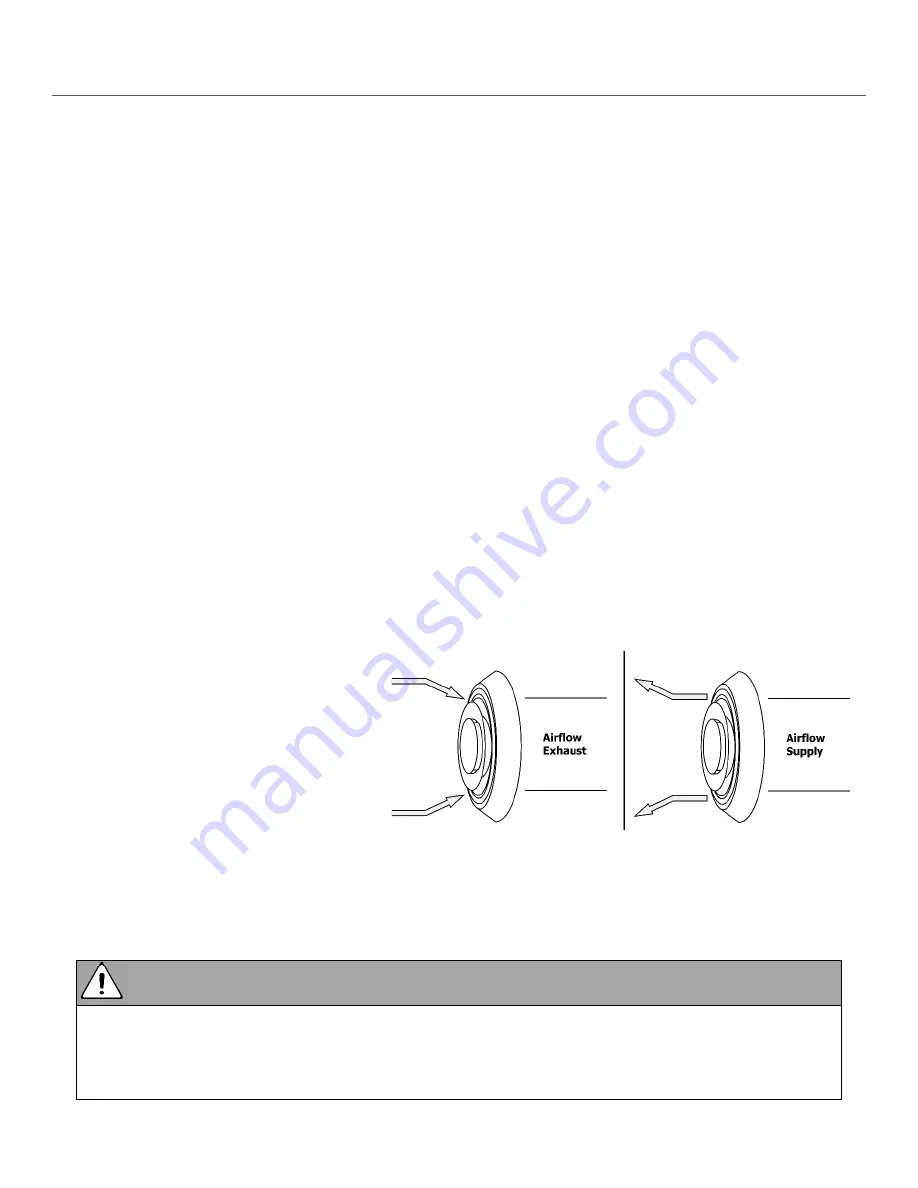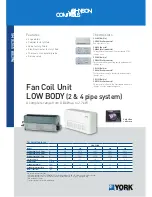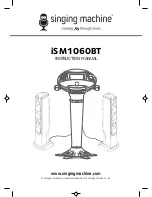
www.lifebreath.com
15
10
W
EATHERHOODS
Outside Weatherhoods:
•
The weatherhoods must have built-
in “bird” screen with 1/4 in (6.35 mm) minimum mesh to prevent
birds and rodents from entering into the ductwork.
Recommend:
o
no less than 10 ft. (3 m) apart from each other
o
at least 18 in (46 cm) above snow line or ground level
o
away from sources of contaminants, such as automobile exhaust fumes, gas meters, garbage cans,
containers, etc.
o
not exposed to prevailing winds
o
The outside perimeter of the weatherhood must be caulked to prevent leakage into the building.
o
The design and size of the weatherhoods or louvers chosen by the installer must allow for adequate
free area. Water and debris penetration of the system is minimized when the airflow does not
exceed 1000 FPM (5.08 m/s) free area velocity.
Ducting from the Weatherhoods:
•
Galvanized sheet metal ducting with sufficient cross section with an integral single piece vapor barrier
should be used to connect the ERV to the weatherhoods.
•
A minimum R value of insulation should be equal to 4 (RSI 0.75)
•
A good bead of high quality caulking (preferably acoustical sealant) and taping with a high quality
aluminum foil tape is recommended to seal the duct to both the ERV and the weatherhood.
Techgrilles:
The use of balancing dampers or adjustable grilles as supply air diffusers and air exhaust covers are
recommended. TECHGRILLES™ are round, efficient, sound absorbing devices available
in 4”, 5”, 6” and 8”
(100, 125, 150, and 200 mm) models.
Part# 99-EAG4
4” diameter Techgrille
Part# 99-EAG5
5” diameter Techgrille
Part# 99-EAG6
6” diameter Techgrille
Part# 99-EAG8
8” diameter Techgrille
Attention
•
All ducting must meet UL Class 1 requirements
•
Design and install the fresh air intake in an area where the hoods will gather the freshest air.
•
Do not use smaller mesh as it will be very susceptible to plugging up. Gravity dampers at the
vents mu
st not be used as they will restrict air flow and often “seize up”
.
















































